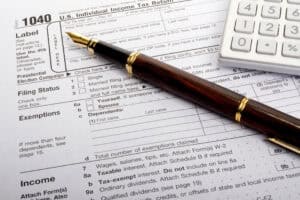Buying a home is a major milestone, but many buyers focus only on the monthly mortgage payment. In reality, the cost of owning a home goes well beyond your principal and interest. From property taxes to maintenance surprises, understanding the full picture helps you avoid budget stress and make smarter long-term decisions.
This guide breaks down the most common hidden costs of owning a home, how much to budget for each, and what new buyers often overlook.
Property Taxes
Most homeowners pay property taxes through their escrow account, but that doesn’t make them any less real. Property taxes vary by state and municipality, and are based on the assessed value of your home.
-
The national average: $2,800 per year
-
High-tax states like New Jersey or Illinois: $6,000+
Property taxes often rise over time, especially if your local government increases millage rates or your home is reassessed after upgrades.
Homeowners Insurance
Lenders require homeowners insurance, which protects your property from damage, theft, or liability claims. Premiums depend on your home’s size, location, age, and risk factors.
-
Average annual premium: $1,200–$2,000
-
Flood, hurricane, or wildfire zones may require additional coverage
Insurance costs can increase annually, especially if you file claims or the property’s replacement value rises.
Utilities
Homeowners are responsible for all utility bills, which can be surprisingly high—especially when moving from a rental or apartment.
-
Typical monthly utilities: $300–$600
-
Includes electricity, water, sewer, trash, natural gas, and sometimes HOA-provided internet or cable
Older homes, large floor plans, or extreme climates can drive costs even higher.
Maintenance and Repairs
Routine maintenance is often underestimated by first-time buyers. Experts recommend budgeting at least 1% of your home’s value per year for upkeep.
-
$300,000 home → ~$3,000 per year
-
Includes HVAC servicing, appliance replacement, painting, gutter cleaning, pest control, etc.
In addition, unplanned repairs like roof leaks or plumbing issues can cost thousands.
HOA Fees
If you buy in a community with a homeowners association, you’ll owe monthly or quarterly dues. These can range from $50 to over $500 depending on the amenities and services provided.
HOA fees often cover:
-
Landscaping and snow removal
-
Community pools or gyms
-
Exterior maintenance for townhomes or condos
Make sure to read the HOA rules, as they may also limit your ability to rent or renovate.
Private Mortgage Insurance (PMI)
If you put down less than 20% on a conventional loan, you’ll likely have to pay PMI. This insurance protects the lender—not you—in case of default.
-
Typical cost: 0.3%–1.5% of your loan annually
-
Can add $100–$250/month until you reach 20% equity
You can use our PMI Calculator to estimate your monthly cost and find out when it can be removed.
Appliances and Furniture
Many buyers overlook the cost of outfitting their new home. Appliances, furniture, curtains, and fixtures can add up quickly—especially in larger spaces.
-
Budget at least $5,000–$10,000 for basic furnishings
-
Costs increase for full-house furniture, new appliances, or high-end upgrades
Plan to stagger these expenses over time unless you’re fully stocked upfront.
Lawn Care and Landscaping
Whether you’re mowing it yourself or hiring a service, a yard comes with responsibilities.
-
DIY cost: $25–$50/month (equipment, fuel, maintenance)
-
Professional service: $50–$150/month
-
Annual landscaping or tree removal: $500–$5,000+
Even low-maintenance homes often require basic exterior upkeep.
Pest Control
From termites to rodents, pest issues are more common than many homeowners expect. Annual inspections, spraying, or treatment plans can cost $300–$1,000+, depending on location and home type.
Emergency Fund
Owning a home means you need to be financially ready for surprises. Experts recommend keeping 3–6 months of expenses in a separate fund for unexpected repairs, job loss, or disasters.
FAQ: Cost of Owning a Home
What are the hidden costs of owning a home?
Hidden costs include property taxes, insurance, utilities, repairs, PMI, HOA fees, and more. These costs are not included in your mortgage payment but can add hundreds per month.
How much should I budget for home maintenance?
Plan to spend 1% of your home’s value annually. For a $300,000 home, that’s around $3,000 per year, covering routine upkeep and unexpected repairs.
Are property taxes included in my mortgage?
Often yes—your lender collects taxes through escrow. But you’re still responsible, and tax rates can increase annually.
What is PMI and how do I get rid of it?
Private Mortgage Insurance is required if you put down less than 20% on a conventional loan. You can remove it once you reach 20% equity in your home.
Do I need an emergency fund as a homeowner?
Yes. Homeowners should have 3–6 months of expenses saved for repairs, job loss, or emergencies. It’s one of the most overlooked parts of financial planning.
Why are utilities more expensive in a home than an apartment?
Houses have more square footage, older systems, and separate billing for each service. Expect higher costs, especially in extreme climates.
Final Thoughts
The cost of owning a home extends far beyond your mortgage. While many of these expenses are predictable, some can catch new homeowners off guard.
Before you buy, take time to build a realistic monthly budget—including taxes, insurance, utilities, maintenance, and furniture. Use tools like our Loan Affordability Calculator to understand what fits your lifestyle and finances.
Smart planning now will save you stress and surprises later.
Related Posts

The Ultimate Home Maintenance Checklist: Seasonal, Monthly, and Yearly Tips to Protect Your Investment
Owning a home means more than just paying the mortgage — it means maintaining and protecting one of your biggest investments. From HVAC

When to Walk Away After a Home Inspection: Key Red Flags and Smart Buyer Moves
Home inspections are a critical part of the homebuying process — and sometimes, they uncover more than you bargained for. In competitive markets,

The Tax Benefits of Owning a Home: What Every Homeowner Should Know
Owning a home comes with more than just personal and financial stability—it can also unlock valuable tax advantages. If you’re a homeowner or

